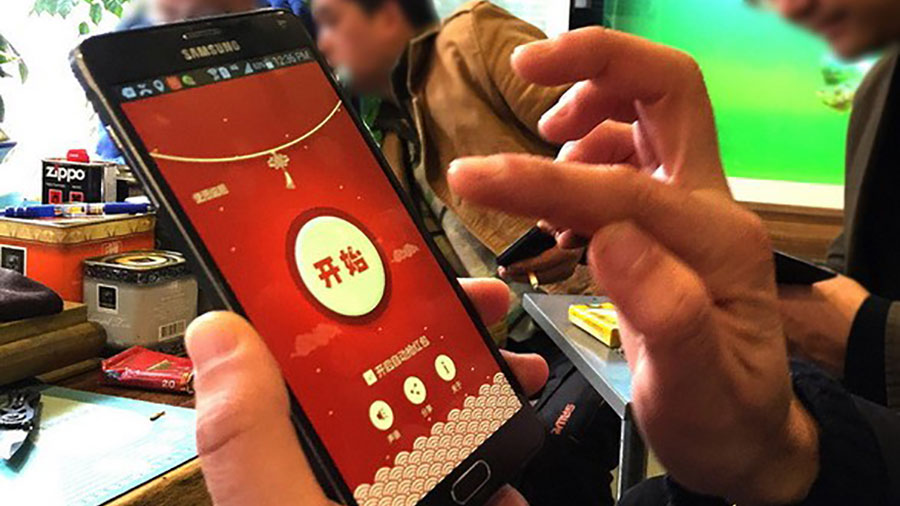China Trials US$1.5 Million Of Free Digital Yuan Via Online ‘Red Envelopes’
Move Will Usher In Challenges To The US Dollar In Global Trade

The People’s Bank of China is trailing its new Digital Yuan in Shenzhen. The city, known for its maker community and manufacturing resources, is taking the lead in trialing China’s digital yuan.
The Shenzhen Government issued RMB 10 million yuan (just under US$1.5 million) worth of digital currency to 50,000 randomly selected residents who applied for the handout online. The government distributed the money through mobile “red envelopes,” a tool designed to digitize the custom of gifting money in red packets and originally popularized by WeChat’s e-wallet.
“Red packets are a common way we’ve seen in China internet companies to spur adoption like what we’ve seen with Tencent WeChat and Alibaba’s Alipay in the early days, when these products were first launched,” Flex Yang, CEO of crypto finance firm Babel Finance has said.
The digital yuan is not a a form of cryptocurrency. Instead, it is issued and managed by the People’s Bank of China, serving as the statutory, digital version of China’s physical currency and giving Beijing a better grasp of its currency circulation. It’s meant to supplement, not replace, third-party payments apps like WeChat Pay and Alipay in a country where cash is dying out.
For example, the central government may in the future issue subsidies to local offices by sending digital yuan, which can help tackle issues like corruption.
Shenzhen is one of the four Chinese cities to begin internal testing of the digital yuan, announced a government notice in August without going into the specifics. The latest distribution to consumers is seen as the country’s first large-scale, public test of the centrally issued virtual currency.
Nearly 2 million individuals in Shenzhen signed up for the lottery. Winners could redeem the 200 yuan red envelope within the official digital yuan app and spend the virtual money at more than 3,000 retail outlets in the city.
As its next step, Shenzhen will launch a “fintech innovation platform” through its official digital currency institute, according to a central government document detailing the city’s five-year development measures, including attracting more foreign investment in cutting-edge technologies. The city will also play a key role in furthering the digital yuan’s research and development, application and international collaboration.
Suzhou and Chengdu, as well as the Xiong’an New Area near Beijing are also trialing the currency, and together with Shenzhen these cities have a combined population of more than 38 million people. The Digital Yuan is being tested and used to subsidize transport in Suzhou, while in Xiong’an the trial primarily focuses on food and retail. The pilots’ aim in all locations is to “optimise and improve” functionality ahead of the wider roll-out of the currency. China is be the first major economy to use such a technology.
The “fintech innovation platform” is designed to allow private enterprises and other institutions to participate in these real-world or capital market development projects that aim to collectively grow the adoption of the DCEP [digital currency electronic payment].
While the central bank provides the logic and infrastructure supporting the digital yuan, there’s much room for commercial banks and private firms to innovate on the application level. Both ride-hailing platform Didi and JD’s Fintech subsidiary have also recently unveiled steps to help accelerate the digital yuan’s real-life implementation. The general public would be able to convert money in their bank accounts to the digital version and make deposits via electronic wallets, while the technology allows the digital currency to be exchanged without an internet connection. It can also be used to make contactless payments. The Chinese government is yet to confirm a proposed timeline for the rollout of the digital yuan, but numerous reports suggest a mid-2021 launch date.
If the pilot in Shenzhen goes well, other cities will launch their pilot programs, along with new application scenarios, thus accelerating the adoption of the DCEP. That is also likely to expand along the Belt & Road Initiative and especially countries either under or threatened by sanctions by the United States.
Separately, China in late April this year made its Blockchain-based Service Network – or BSN – available for global commercial use. The BSN, led by the Chinese government-backed think tank State Information Center, is a global infrastructure that claims to help projects create and run new blockchain applications for a lower cost. There are obvious currency and financial transactional applications for this technology. With US third party banks taking a cut of every transaction that goes via the SWIFT network, China can be expected to undercut the United States service charges and present a fait accompli: a less expensive, yet more technically secure global payment transactions system. That especially holds true for its Belt & Road Initiative trading partners.
Related Reading
About Us
Silk Road Briefing is written by Dezan Shira & Associates. The firm has 28 offices throughout Asia, and assists foreign investors into the region. For strategic advisory and business intelligence issues please contact the firm at silkroad@dezshira.com or visit www.dezshira.com





